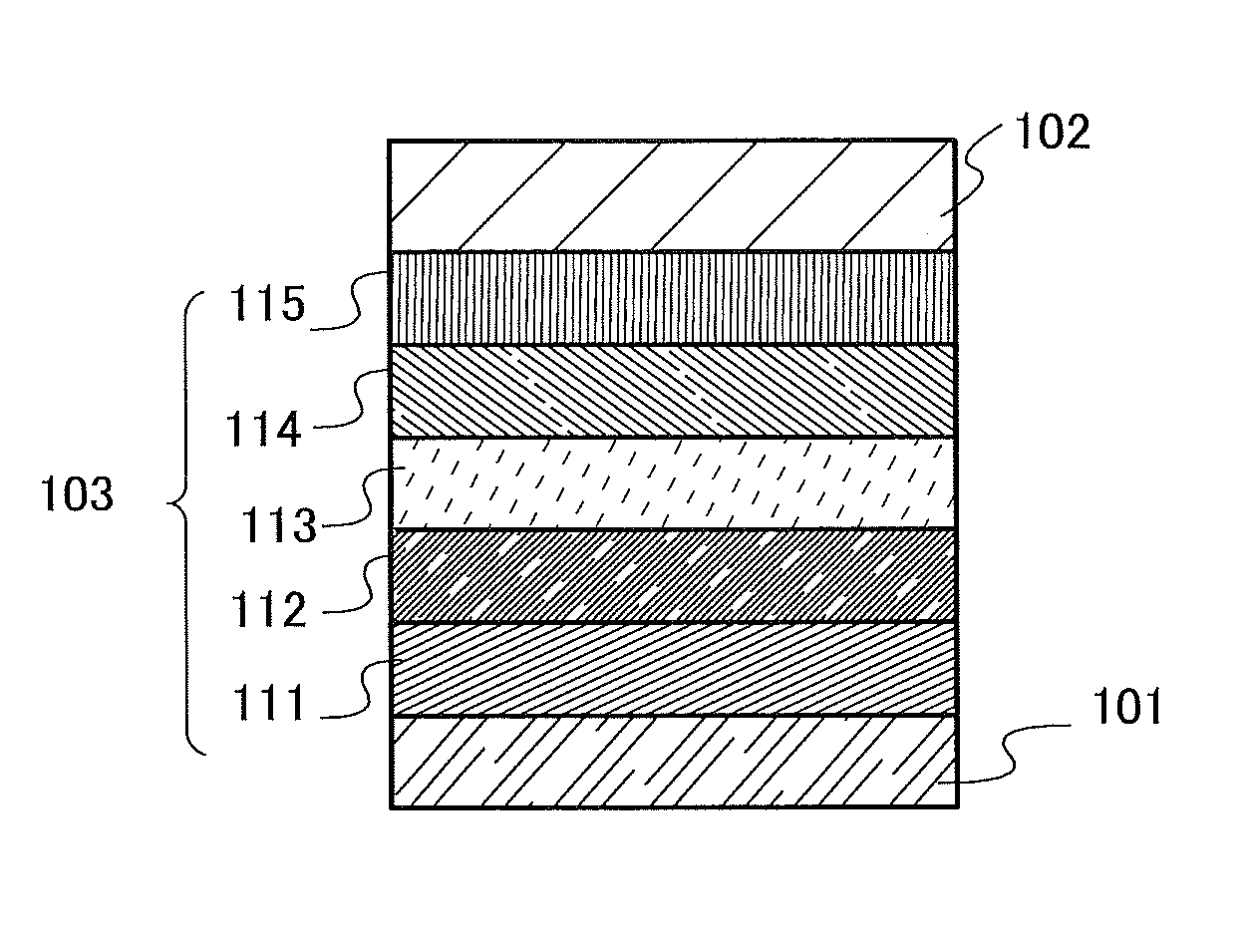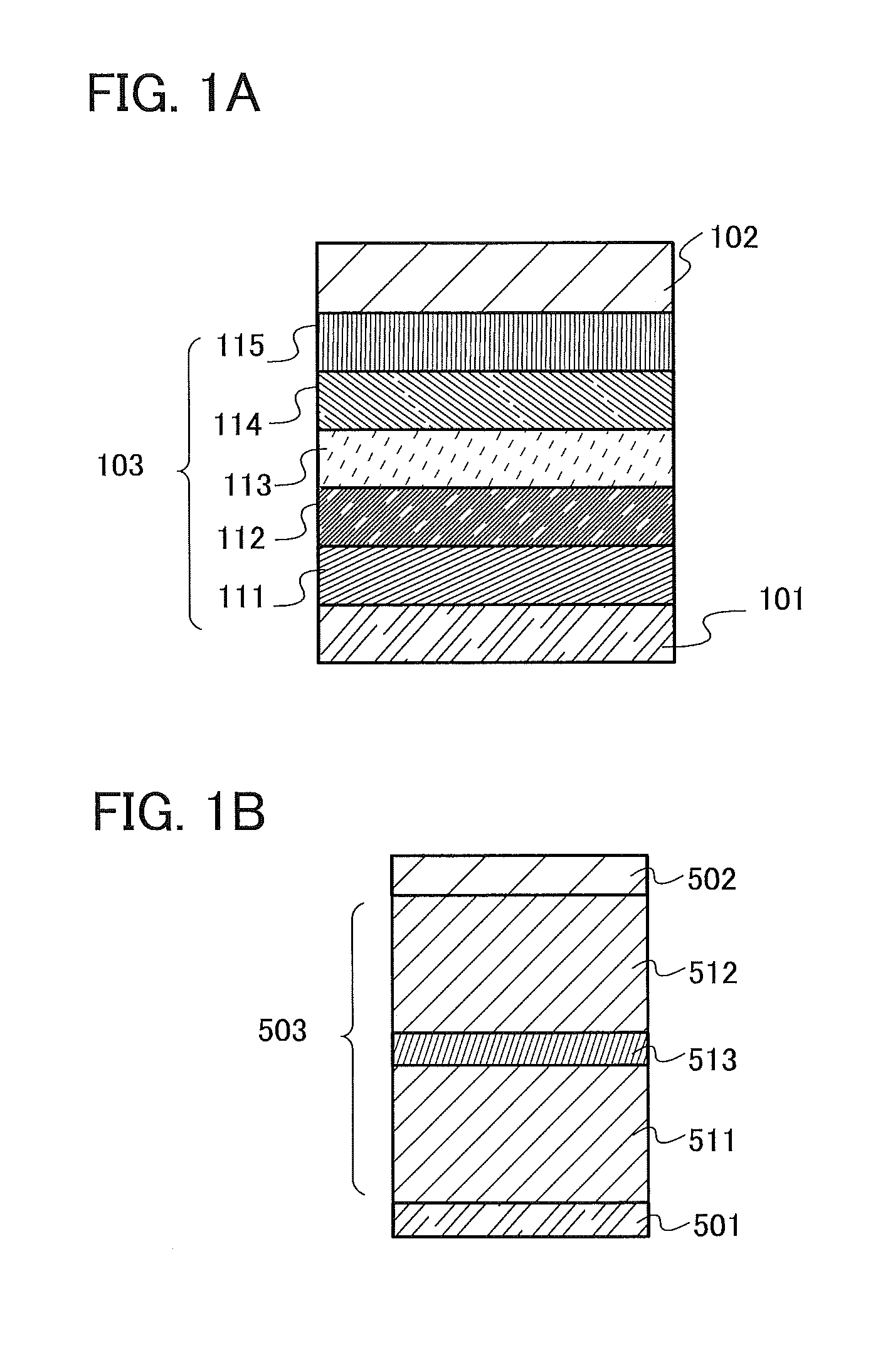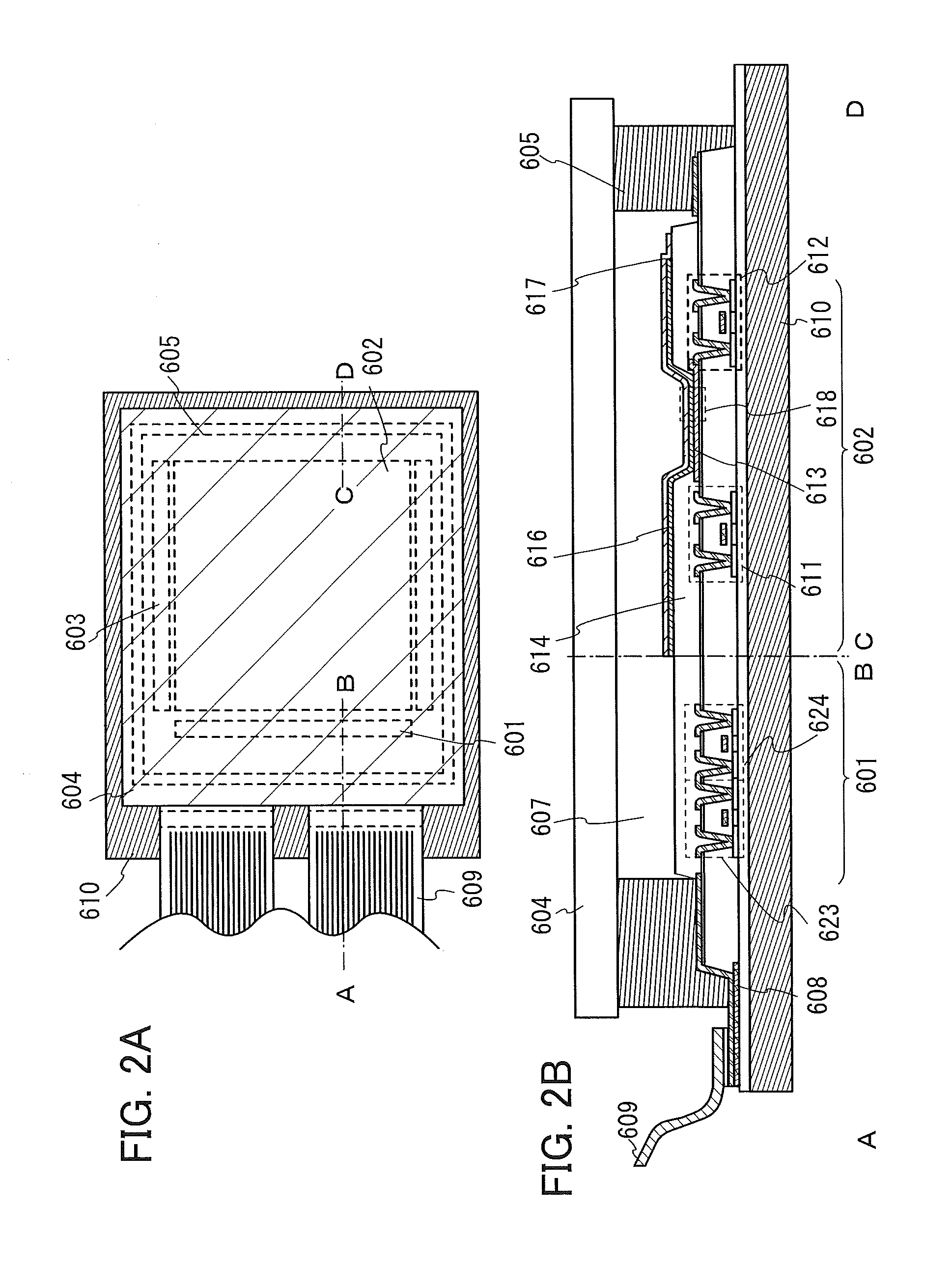Organic Compound, Light-Emitting Element, Display Module, Lighting Module, Light-Emitting Device, Display Device, Electronic Device, and Lighting Device
- Summary
- Abstract
- Description
- Claims
- Application Information
AI Technical Summary
Benefits of technology
Problems solved by technology
Method used
Image
Examples
example 1
[0322]In this example, a method of synthesizing N,N′-bis(2,6-dimethylphenyl)-N,N′-bis[3-(9-phenyl-9H-fluoren-9-yl)phenyl]pyrene-1,6-diamine (abbreviation: 1,6oDMemFLPAPrn), which is an organic compound of one embodiment of the present invention, is described. A structural formula of 1,6oDMemFLPAPrn is shown below.
Step 1: Synthesis of N-(2,6-dimethylphenyl)-N-[3-(9-phenyl-9H-fluoren-9-yl)phenyl]amine (abbreviation: oDMemFLPA)
[0323]Into a 200-mL three-neck flask were put 2.7 g (6.9 mol) of 9-(3-bromophenyl)-9-phenyl fluorine and 2.0 g (21.0 mol) of sodium tert-butoxide, and the air in the flask was replaced with nitrogen. Then, 35.0 mL of toluene, 0.9 mL (6.9 mol) of 2,6-dimethylaniline, 0.5 mL of a 10% hexane solution of tri(tert-butyl)phosphine, and 42 mg (0.1 mmol) of bis(dibenzylideneacetone)palladium(0) were added thereto, the temperature of the mixture was set to 90° C. and the mixture was stirred for 13.0 hours. After the stirring, suction filtration through Florisil (produced ...
example 2
[0336]In this example, a light-emitting element of one embodiment of the present invention (Light-emitting element 1) and a Comparative light-emitting element 1 are described. Structure formulae of organic compounds used for Light-emitting element 1 and Comparative light-emitting element 1 are shown below.
(Method of Manufacturing Light-Emitting Element 1)
[0337]First, a film of indium tin oxide containing silicon oxide (ITSO) was formed over a glass substrate by a sputtering method, so that the first electrode 101 was formed. The thickness of the first electrode 101 was set to 110 nm and the area of the electrode was set to 2 mm×2 mm. Here, the first electrode 101 is an electrode that functions as an anode of a light-emitting element.
[0338]Next, in pretreatment for forming the light-emitting element over the substrate, a surface of the substrate was washed with water and baked at 200° C. for an hour, and then UV ozone treatment was performed for 370 seconds.
[0339]Then, the substrate ...
example 3
[0354]In this example, a method of synthesizing N,N′-bis[3-(dibenzofuran-4-yl)-2,6-dimethylphenyl]-N,N′-diphenylpyrene-1,6-diamine (abbreviation: 1,6mFrBAPrn-04), which is an organic compound of one embodiment of the present invention, is described. A structural formula of 1,6mFrBAPrn-04 is shown below.
Step 1: Synthesis of N-[3-(dibenzofuran-4-yl)-2,6-dimethylphenyl]-N-phenylamine (abbreviation: mFrBA-04)
[0355]Into a 200-mL three-neck flask was put 5.2 g (26.1 mmol) of 3-bromo-2,6-dimethylaniline, and the air in the flask was replaced with nitrogen. To this flask were added 98.0 mL of toluene, 32.0 mL of ethanol, 6.6 g (31.3 mmol) of 4-dibenzofuran boronic acid, 0.4 g (1.3 mmol) of tris(2-methylphenyl)phosphine, and 25.8 mL of a potassium carbonate solution (2 mol / L). The mixture was degassed, and 0.09 g (0.4 mmol) of palladium(II) acetate was added thereto. The mixture was stirred at 90° C. for 15.5 hours. After the stirring, toluene and water were added to the mixture, an organic ...
PUM
| Property | Measurement | Unit |
|---|---|---|
| Width | aaaaa | aaaaa |
| Wavelength | aaaaa | aaaaa |
| Energy | aaaaa | aaaaa |
Abstract
Description
Claims
Application Information
 Login to View More
Login to View More - R&D
- Intellectual Property
- Life Sciences
- Materials
- Tech Scout
- Unparalleled Data Quality
- Higher Quality Content
- 60% Fewer Hallucinations
Browse by: Latest US Patents, China's latest patents, Technical Efficacy Thesaurus, Application Domain, Technology Topic, Popular Technical Reports.
© 2025 PatSnap. All rights reserved.Legal|Privacy policy|Modern Slavery Act Transparency Statement|Sitemap|About US| Contact US: help@patsnap.com



